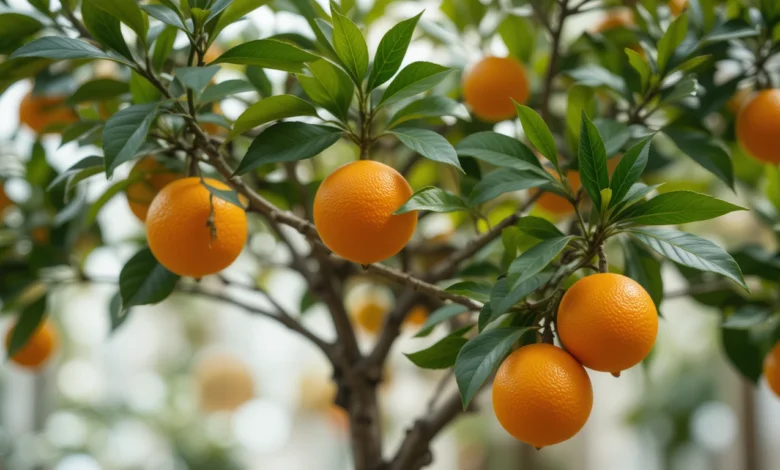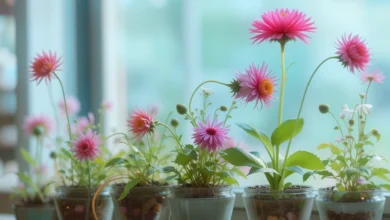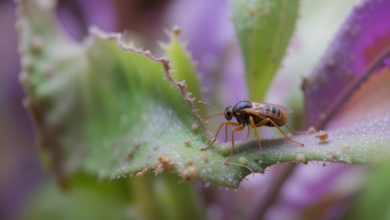How to Grow an Orange Tree Indoors (Step-by-Step Guide)

Growing an orange tree indoors can be a fun and rewarding project. Imagine having fresh, juicy oranges right from your own home, especially in places where outdoor gardening isn’t always possible. Whether you want a decorative plant or you’re hoping for fruit, this guide will walk you through the simple steps to grow and care for your indoor orange tree.
In this article, we’ll cover everything from selecting the right variety of orange tree to providing proper care and maintenance. You’ll find tips on watering, sunlight, and soil, and you’ll learn what common problems to watch out for.
Read More: How to Grow a Lime Tree – A Complete Guide for Beginners
Let’s get started!
Choosing the Right Orange Tree for Indoors
When growing an orange tree indoors, it’s important to choose the right variety. Some orange trees are better suited for indoor life because they are smaller, more compact, and can thrive in pots. Here are a few good options:
- Calamondin Orange Tree: This is one of the most popular indoor orange trees. It’s small, grows well in pots, and can tolerate indoor conditions.
- Dwarf Varieties: Dwarf orange trees, such as the Improved Dwarf Navel Orange or Dwarf Valencia, are great for indoors because they stay small but still produce fruit.
- Meyer Lemon Tree: Although technically a lemon tree, the Meyer Lemon is often grown indoors for its sweet, orange-like fruit. It’s compact and perfect for small spaces.
You can find these varieties at local nurseries or online stores. Be sure to choose a tree that has already been grafted to ensure it will produce fruit.
Finding the Right Spot for Your Indoor Orange Tree
Orange trees need plenty of light to grow well. Choose a spot in your home that gets lots of sunshine—about 10 to 12 hours of light each day is ideal. The best places are:
- South-facing windows: These windows get the most sunlight throughout the day.
- West-facing windows: These can also work well, especially in the afternoon.
- Grow lights: If you don’t have a sunny spot, you can use grow lights to supplement natural light.
Remember that the more light your tree gets, the happier it will be!
Potting Your Orange Tree
Orange trees don’t like to be in the ground, so growing them in pots is the way to go. When choosing a pot, keep in mind the following:
- Size: Choose a pot that is 2-4 inches larger in diameter than the root ball of the tree. This gives the tree enough room to grow.
- Drainage: Make sure the pot has drainage holes at the bottom. Orange trees don’t like to sit in water, so proper drainage is important to avoid root rot.
- Material: Clay or ceramic pots are great for indoor orange trees because they allow the soil to breathe. Avoid plastic pots, as they tend to retain too much moisture.
After choosing the right pot, fill it with well-draining soil. A good mix for citrus trees is a combination of garden soil, sand, and peat. You can also purchase a special citrus mix from your local garden store.
Watering Your Indoor Orange Tree
Watering is one of the most important aspects of caring for your orange tree. Too much or too little water can cause problems, so it’s important to get it just right.
- Frequency: Orange trees like their soil to dry out a little between waterings. Water your tree when the top 1-2 inches of soil feel dry to the touch.
- Method: Water deeply, so the water reaches the roots. Be sure to water evenly around the tree. Avoid letting water sit in the saucer underneath the pot.
- Humidity: Orange trees love humidity. If your indoor air is dry (especially in winter), you can increase the humidity by placing the pot on a tray of pebbles and water or using a humidifier nearby.
Feeding Your Orange Tree
Orange trees are heavy feeders, meaning they need regular nutrients to grow strong and healthy. Use a high-quality, balanced fertilizer formulated for citrus trees. Here’s how to feed your tree:
- When to Fertilize: Fertilize your tree every 4-6 weeks during the growing season (spring and summer). In the fall and winter, when the tree is not actively growing, reduce feeding to once every 2-3 months.
- How to Fertilize: Follow the instructions on the fertilizer package for the right amount to use. Over-fertilizing can harm the tree, so it’s best to stick to the recommended amounts.
Pruning Your Indoor Orange Tree
Pruning helps your tree stay healthy and encourages it to produce fruit. Here’s how to prune:
- Remove dead or damaged branches: Use sharp pruning shears to cut off any branches that are dry, broken, or diseased.
- Shape the tree: Trim any branches that are growing too long or in the wrong direction. Aim for a rounded shape to allow sunlight to reach all parts of the tree.
- Cut back in spring: Prune your tree in early spring before new growth starts. Avoid pruning too much during the growing season, as this can stress the tree.
Pollinating Your Orange Tree
If your indoor orange tree produces flowers, it may need a little help from you to produce fruit. Most indoor orange trees are self-pollinating, which means they can produce fruit without another tree nearby. However, you may need to help with the pollination process.
Here’s how you can pollinate your tree:
- Use a paintbrush: Gently use a soft paintbrush or cotton swab to collect pollen from the flowers. Then, transfer the pollen to other flowers on the tree.
- Shake the tree: Gently shake the tree to help the pollen spread.
Pollinating your tree can increase the chances of fruit production, but don’t worry if your tree doesn’t fruit right away—sometimes it takes a few years for indoor trees to start producing.
Dealing with Common Indoor Orange Tree Problems
Like all plants, indoor orange trees can face challenges. Here are a few common problems and how to fix them:
- Yellow Leaves: Yellowing leaves are often a sign of overwatering or a nutrient deficiency. Make sure the tree isn’t sitting in water and try adjusting your watering routine. You may also need to fertilize more regularly.
- Pests: Keep an eye out for pests like aphids, scale, or spider mites. If you spot them, gently wash the leaves with water or use an insecticidal soap.
- Leaf Drop: If your tree is dropping leaves, it might be stressed. This can happen if the tree isn’t getting enough sunlight, if the temperature is too cold, or if it’s being overwatered.
Harvesting Your Indoor Oranges
After a few years of care, your indoor orange tree might start producing fruit! Harvesting oranges is easy—simply twist the fruit off the branch when it’s fully ripe. You’ll know the oranges are ready when they have a bright, deep color and a sweet smell.
Remember that indoor orange trees may take 3-4 years (or longer) to produce fruit, so be patient. It’s worth the wait for the sweet reward!
Will It Grow Oranges Indoors?
Yes! But it may take some time. Most orange trees take 2 to 3 years to produce fruit. Be patient!
To help your tree grow fruit:
- Give it plenty of light
- Keep the temperature steady
- Pollinate the flowers by hand (use a soft brush to move pollen between flowers)
Common Problems and How to Fix Them
| Problem | What It Looks Like | How to Fix It |
|---|---|---|
| Yellow Leaves | Leaves turn pale or fall off | You may be overwatering or lacking nutrients. Check soil and add fertilizer. |
| Drooping Leaves | Leaves look sad or wilted | Could be too much water or not enough light. Adjust both. |
| No Fruit | Tree looks healthy but no oranges | You might need to pollinate flowers by hand or add more light. |
Conclusion
Growing an orange tree indoors is a fun and exciting way to bring a touch of nature into your home. With the right variety, plenty of sunlight, proper watering, and a little care, you can enjoy fresh oranges from the comfort of your own living room.
Whether you’re growing your orange tree for its beauty or for its delicious fruit, following these simple steps will help you succeed. Happy gardening!




